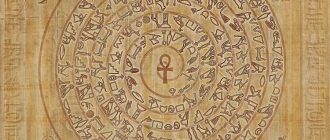Want to learn about Egyptian Hippos? Read on to discover the might of the Egyptian hippos populating the Nile River…
The Egyptian hippo is considered a slow and cute mammal. However, it can kill and harm both animal and human without a lot of effort. The hippo was originally indigenous to Egypt and was revered due to its physical power and assumed spiritual power also.
The term hippopotamus is derived from the Greek language and means water horse. The Egyptian hippos living on the banks of River Nile would spend the entire day grazing on the grass that grew along the riverbank and swam in the water most of the day. The River Nile is considered the life-giving force in ancient Egyptian civilization and is extremely important in their history as well as mythology.
Importance of the River Nile and the Impact of the Egyptian Hippo
The River Nile is considered the life force for the entire entry of Egypt ancient times. It was the main source of water and irrigation providing access to resources like silica and papyrus or water reed. Apart from this, the fish that was caught from the river is used as a source of nourishment for the people of Egypt. The hippopotamus was feared by the people because the fishermen were at the mercy of this huge animal when they invaded territorial waters to fish. This led to the deaths of many workers hence creating fear and awe amongst people.
Apart from this the Egyptian hippopotamus invaded nearby lands and destroyed many crops especially if they moved in pairs. This fear obviously turned into respect and the Egyptian people started worshiping the hippo because they had to share their territory and maneuver around these animals to get the life force from the River Nile.
Egyptian Hippopotamus as a Religious Deity
The reverence showered on the Egyptian hippo caused it to become an important figure in the arts and religion of that ancient nation. However, there were very few deities who were presented in the form of the Egyptian hippopotamus. One of them was Tauret who was the goddess representing childbirth and female fertility. She was represented standing on her hind legs and considered half hippo and half human with a pregnant belly of the hippopotamus. This deity was very popular and was housed in many homes by being decorated with amulets round the neck for added protection.
It is quite contradictory to see a destructive and vicious animal being utilized to depict a life-giving force. However, this can be understood by the fact that it populated the Nile which was the source of fertility in the land of Egypt.
The annual flooding of the plains and drawing back of the water caused many crops to flourish on the banks of River Nile and further inland. This led to the people being nourished every year and the hippo could possibly represent the power of the River Nile and its impact on Egypt.
On the flip side the ancient Egyptian hippopotamus was also depicted as the deity called Seth. He was an evil god and the brother of Osiris who is considered to be the God of the dead. The destructive forces of the Nile like excessive flooding were represented by Seth who was considered the God of storm and violence. This nature of the hippopotamus was translated as the power and vulnerability of the River Nile to the God of destruction.





